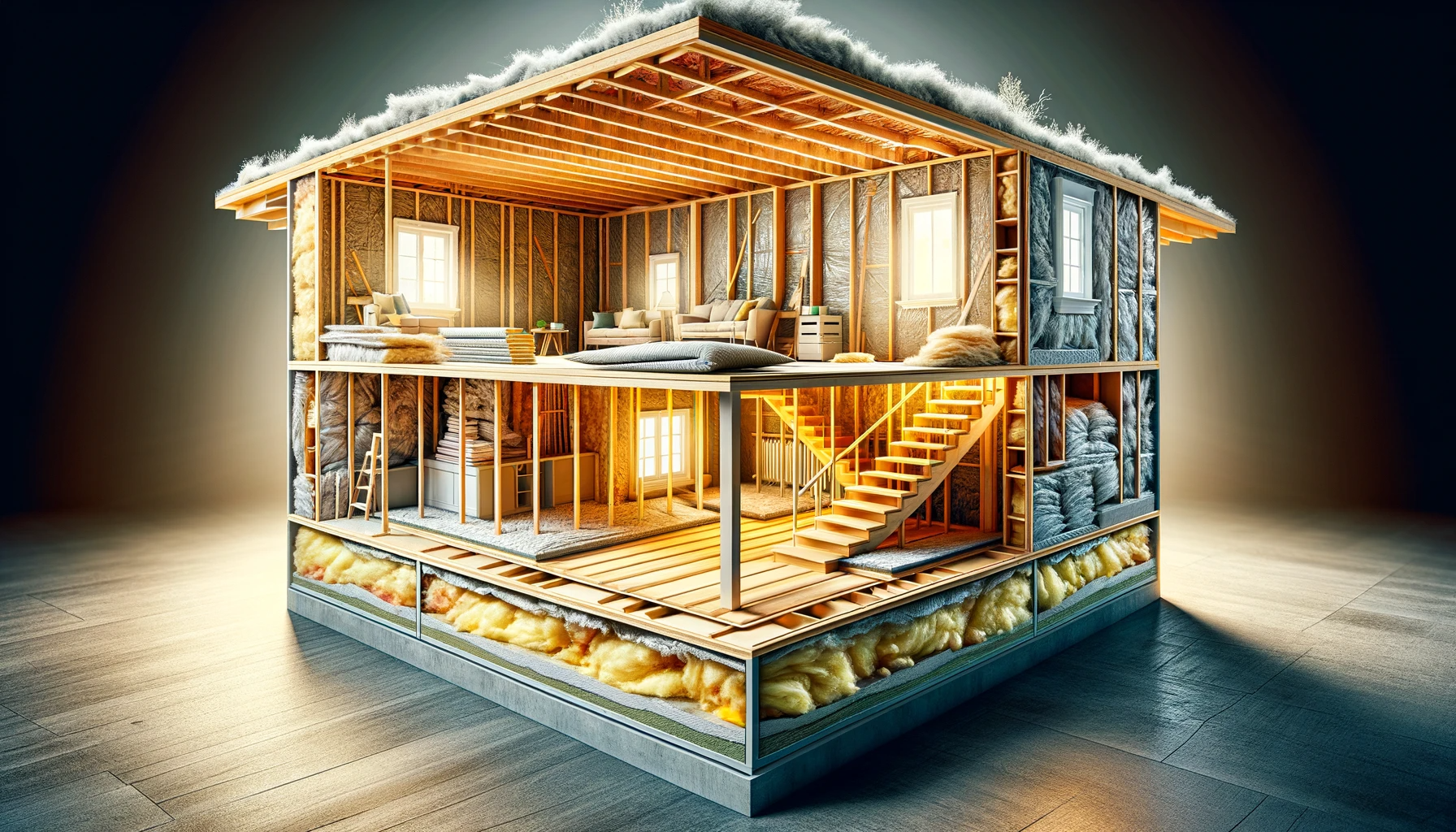
Home insulation is a crucial aspect of building construction and renovation. It involves the use of materials to reduce the flow of thermal energy, thereby decreasing heating and cooling costs and improving comfort. Insulation works by providing resistance to heat flow through conduction, convection, and radiation.
The R-value of insulation measures its resistance to conductive heat flow, with higher R-values indicating greater insulating effectiveness.
Various materials, such as fiberglass, rockwool, cellulose, foam, and structural insulated panels, can be used for insulation. Insulating different areas of a home, including walls, ceilings, roofs, and floors, is essential for maximizing energy efficiency and comfort.
Additionally, proper insulation contributes to financial, acoustic, and healthy home comfort.
Contents
- Highlight the Benefits
- Understanding Home Insulation
- Assessing Your Home’s Insulation Needs
- Insulation Options for Different Home Areas
- DIY Insulation Vs. Professional Installation
- Professional Insulation Installation
- Cost-Effective Insulation Solutions
- Additional Benefits of Insulation
- How Ignoring Window Insulation Can Skyrocket Your Energy Bills
- FAQs
Highlight the Benefits
Energy efficiency offers several benefits, including cost savings, enhanced comfort, and environmental impact. Here are the highlighted benefits:
- Cost Savings: Energy efficiency leads to lower energy consumption, resulting in reduced energy bills. This is evident in various settings, such as industrial facilities and hospitality sectors, where energy management practices contribute to significant cost savings.
- Enhanced Comfort: Energy efficiency measures, particularly in buildings, create a more comfortable environment for occupants, leading to improved well-being and higher productivity. For instance, energy-efficient windows not only lower utility bills but also create a more comfortable and pleasant living environment.
- Environmental Impact: Energy efficiency reduces greenhouse gas emissions and contributes to a more sustainable future. It also has a positive impact on health and well-being, such as reducing symptoms of respiratory and cardiovascular conditions.
In summary, energy efficiency not only brings about cost savings but also enhances comfort and contributes to a greener planet and improved health and well-being.
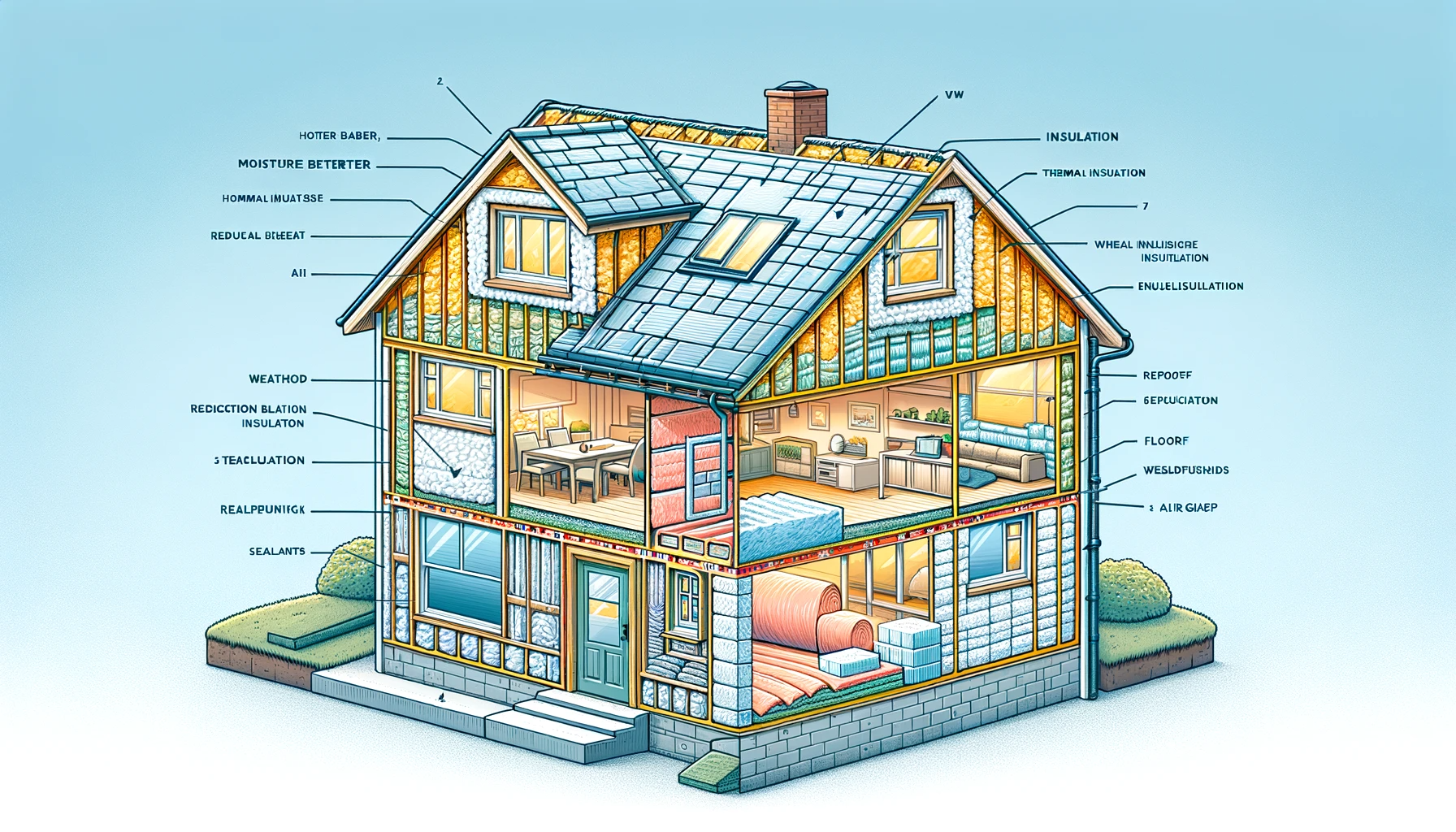
Understanding Home Insulation
Insulation is a material used to reduce the transfer of heat. It works by trapping air, which is a poor conductor of heat, creating a barrier between the inside and outside of a building. This reduces the amount of heat that flows in and out, helping to maintain a comfortable temperature and save energy.
The most common types of insulation materials used in homes include:
- Fiberglass: Consists of fine glass fibers and is available in blanket (batts and rolls), loose-fill, and rigid board forms.
- Mineral wool: Made from rock or slag, it is available as blanket insulation and loose-fill.
- Cellulose: Primarily made from recycled newsprint and is commonly used as loose-fill insulation.
- Rigid foam insulation: Commonly used in walls, floors, and ceilings.
- Spray foam insulation: A type of insulation that is sprayed into place as a liquid and then expands to fill the cavity.
These materials are chosen based on the area to be insulated and the recommended R-values for those areas.
The R-value is a measure of the insulation’s ability to resist heat flow; the higher the R-value, the better the thermal performance. The choice of insulation type also depends on the method of installation and the specific requirements of the building structure.
Assessing Your Home’s Insulation Needs
To determine if your home is under-insulated, you can consider the following key areas and methods:
How to Determine if Your Home is Under-Insulated
- Home Energy Assessment: A professional energy assessment by a certified energy assessor can evaluate your home’s energy use, insulation, and air sealing to identify areas of energy wastage and recommend improvements.
- DIY Assessment: While not as thorough as a professional audit, a simple do-it-yourself walk-through can help you identify and prioritize some energy efficiency issues, such as checking for drafts, measuring the thickness of insulation in the loft and floors, and inspecting the age of the house.
Key Areas in a Home that Typically Need Insulation
- Loft/Attic: Check the depth of insulation, ventilation, presence of dampness, and size of the access hatch.
- Walls: Consider a cavity wall insulation survey to assess the width of the cavity and the suitability for insulation.
- Floors: Inspect the thickness of insulation in the floors and consider adding more if necessary.
- Doors and Windows: Look for drafts around doors and windows, which could indicate insufficient insulation.
By assessing these areas, you can determine if your home is under-insulated and identify the necessary improvements to enhance energy efficiency and comfort.
Insulation Options for Different Home Areas
Attic Insulation Options
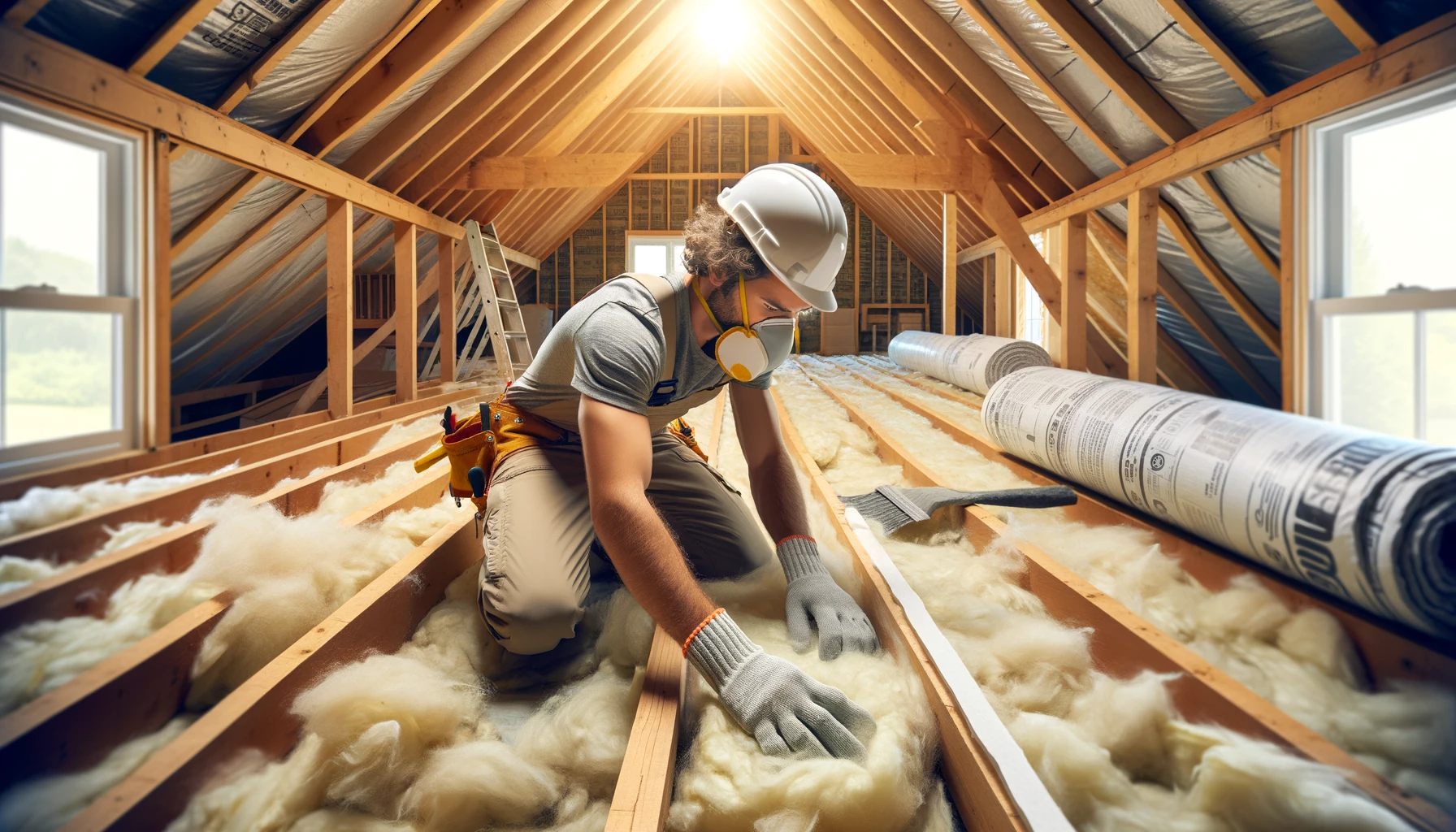
For attic insulation, the most effective types include rolls of rock, glass, or mineral fiber, such as Earthwool by Knauf, which is environmentally friendly and suitable for between joists.
Loose-fill insulation, like cork granules, cellulose fiber, or mineral wool, is ideal for hard-to-reach places but can be more expensive and requires professional installation. Insulation boards and batts are also options for insulating rafters, with materials like mineral or glass wool held in place by battens or netting.
Wall Insulation Best Practices
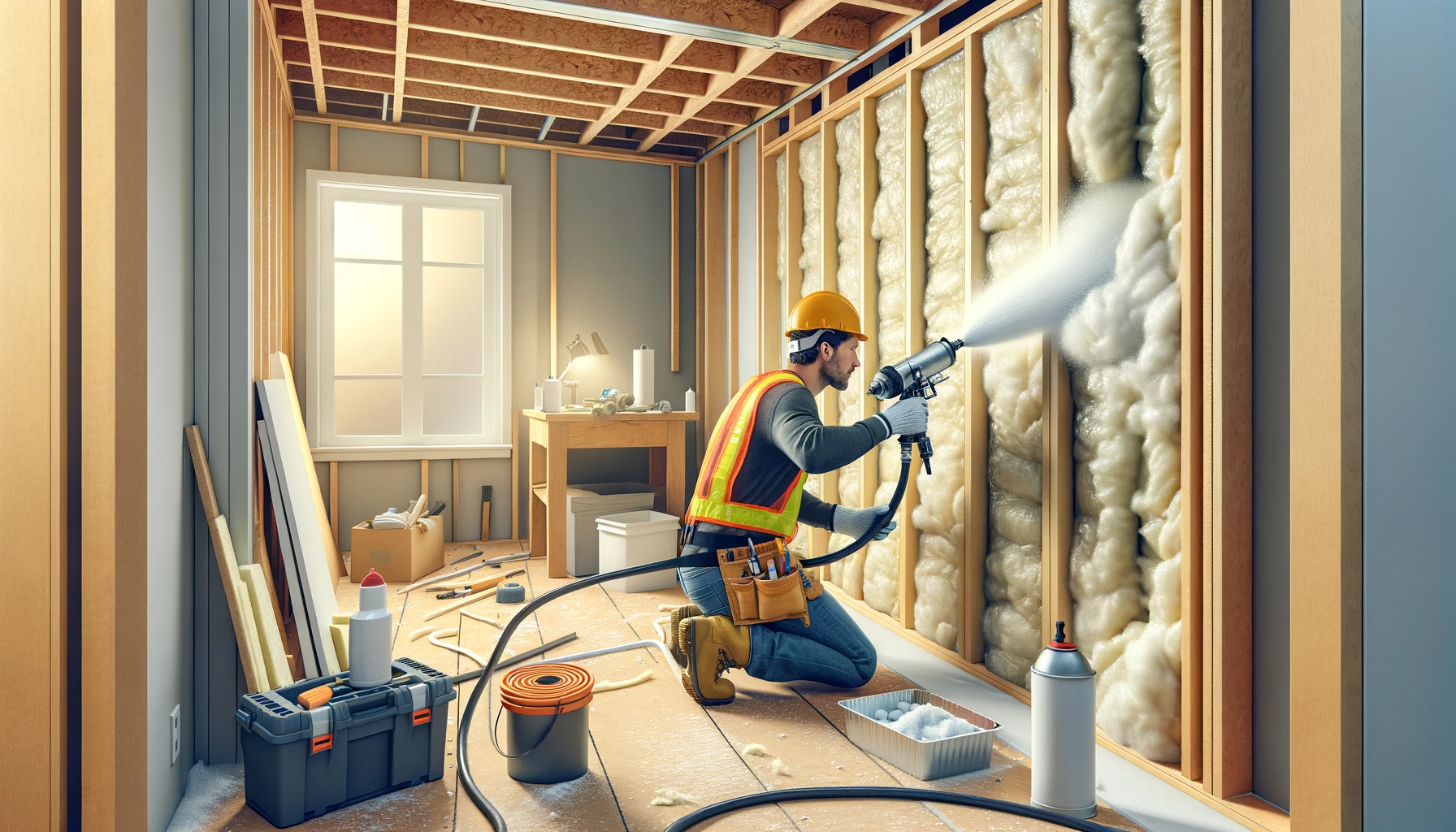
When insulating walls, it’s crucial to manage moisture effectively. A robust strategy involves designing from first principles, considering thermal bridging, airtightness, and moisture management.
Hybrid approaches combining external and internal wall insulation can be effective, especially in conservation areas. For internal wall insulation, it’s recommended to use insulated plaster or ensure a smooth wall surface before installation. If a ventilation cavity is specified, a vapor permeable membrane should be installed behind the insulation.
Basement and Crawl Space Insulation Tips
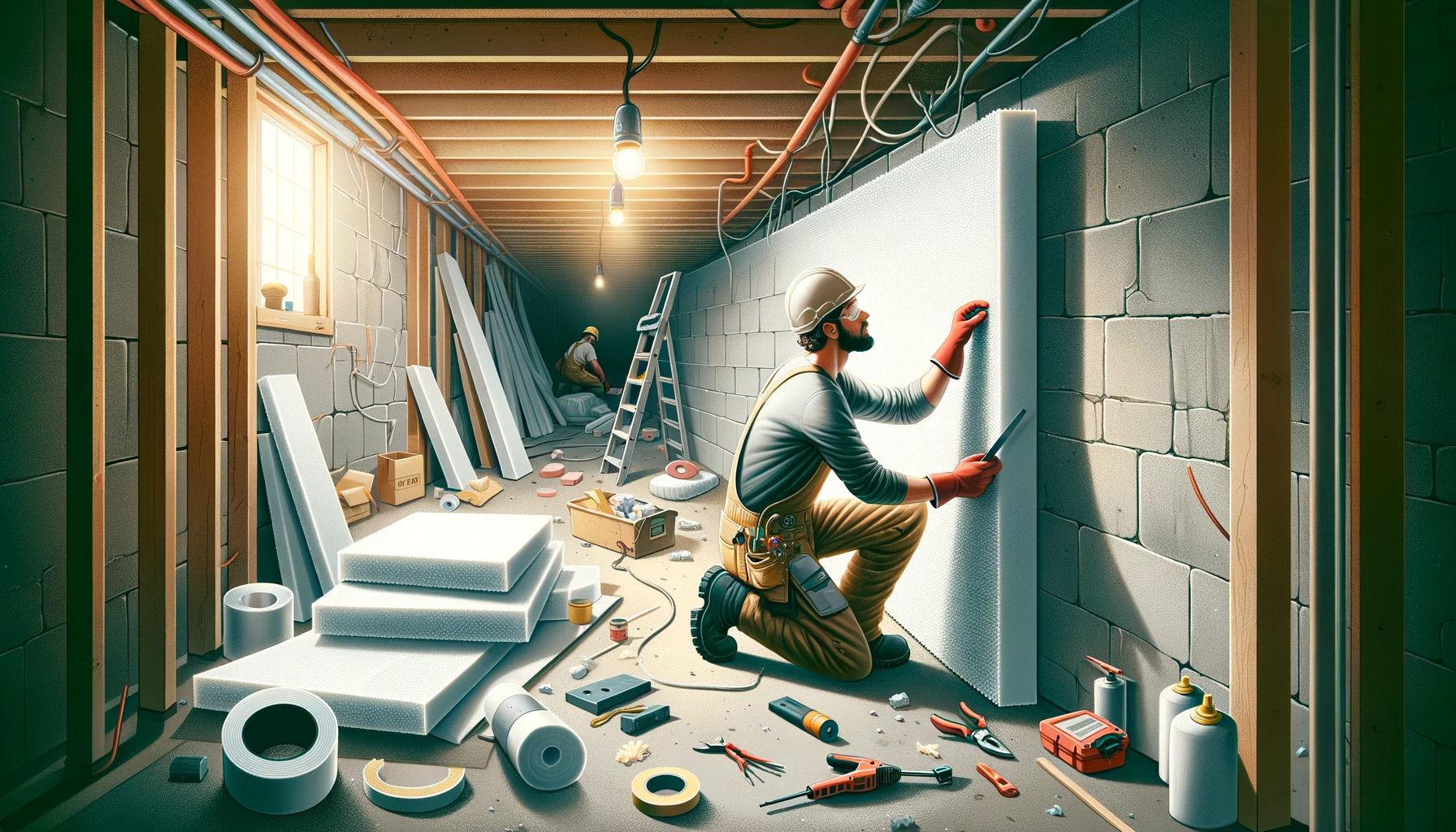
For crawl spaces, best practices include fixing groundwater leaks, isolating the home from the earth, insulating the walls with foam board insulation, and sealing vents and air leaks. It’s more effective to insulate the crawl space walls rather than the ceiling, using materials that resist water and moisture damage.
Insulating Floors and Ceilings
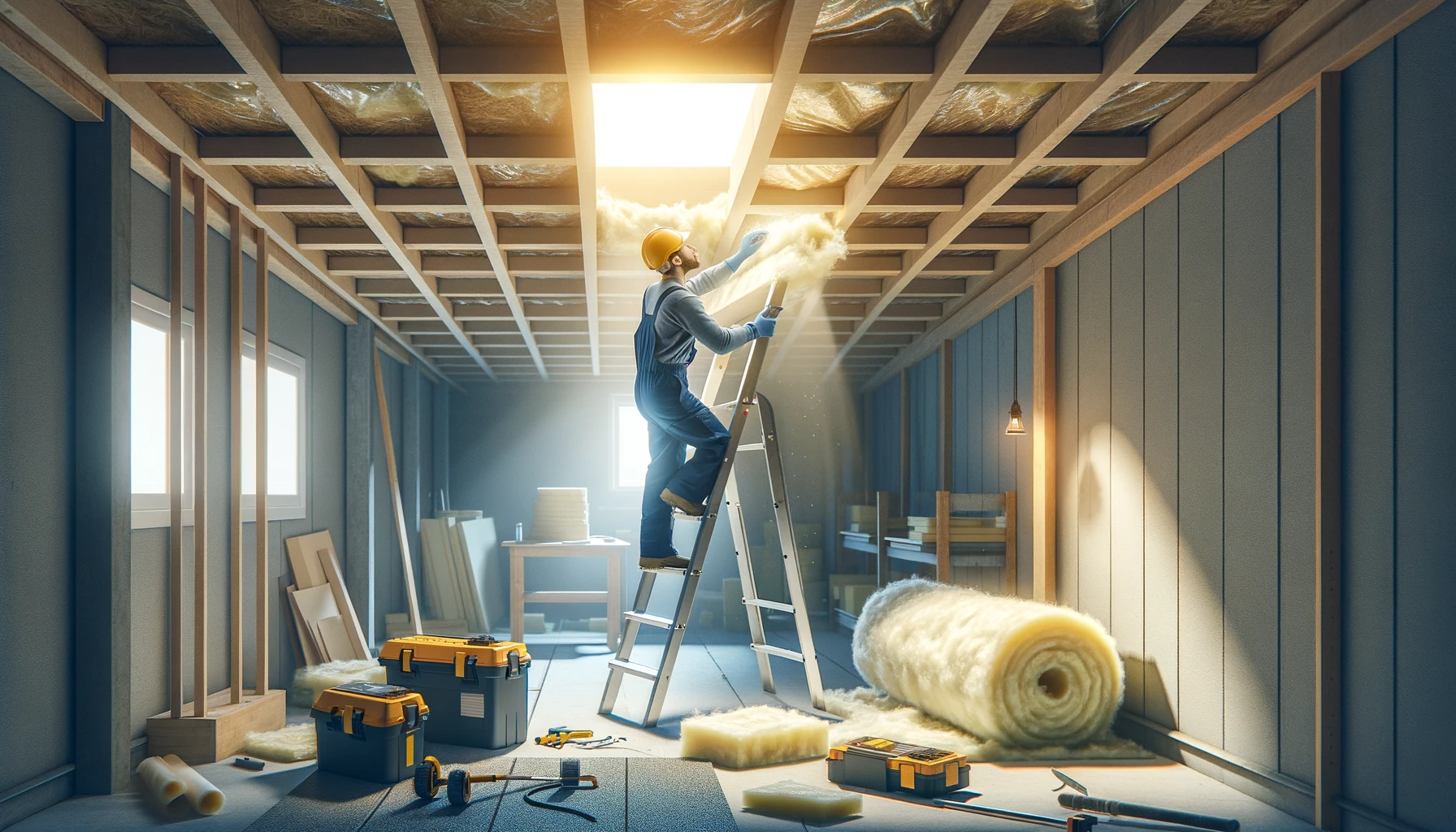
Floor insulation varies depending on the type of floor. Solid floors can be insulated with rigid foam, either above or below the concrete. Suspended timber floors can be insulated by lifting the floorboards and laying mineral wool insulation.
It’s important not to block air bricks that ventilate the space under the floor to prevent floorboards from rotting. For ceilings, especially in between floors, insulated plasterboard can make a significant difference and can be installed directly onto existing surfaces.
Spray foam is also a highly effective option for insulating attic floors and rim joists in crawl spaces.
DIY Insulation Vs. Professional Installation
DIY insulation installation and professional insulation installation both have their pros and cons.
DIY Insulation Installation
Pros
- – Cost-Effective: DIY insulation can save money on the cost of insulation.
- – Suitable for Certain Areas: Fiberglass batts and rolls are fairly inexpensive and can be installed in open and accessible crawl spaces, and rim joists by the handy homeowner. The homeowner can also install blown-in cellulose insulation (with a rented machine) and foam boards.
Cons
- – Time and Effort: A lot of time and effort needs to go into a DIY insulation project.
- – Risk of Incorrect Installation: DIY insulation may not be installed correctly, which can lead to heat loss in the home.
- – Health Risks: If you do not take the right precautions you can end up with fiberglass embedded in your skin or lungs.
- – Limited Scope: DIY insulation is typically limited to unfinished attics and basements, not walls or ceilings unless a renovation is ongoing that allows access.
Professional Insulation Installation
Pros
- – Expertise: Professionals have the necessary level of expertise and all the necessary tools, ensuring the job will be done timely and properly.
- – Safety: Professionals are mindful of safety rules while working in areas such as attics where inexperienced DIYers might face hazards.
- – Compliance with Regulations: Professional insulation contractors understand local regulations and standards.
- – Higher R-Value: Professionally installed insulation usually has a higher R-value, a measure of resistance to heat flow through a given thickness of material.
- – Comprehensive Service: Professionals can handle complex insulation projects, including those that require insulation in existing walls without tearing down drywall.
Cons
- – Cost: Hiring a professional insulation contractor can be more expensive than DIY installation.
When to Consider Hiring a Professional
You should consider hiring a professional when:
- – The insulation project is complex and includes some different installation techniques.
- – The space you want to insulate is not open and accessible, such as walls or ceilings unless a renovation is ongoing that allows access.
- – You are not comfortable or skilled enough to take on the job.
- – There are safety issues present which might make the job more suitable for a professional.
- – You are dealing with a common insulation material that can be installed by a professional.
- – You want to ensure the insulation is installed correctly and you’re not worried about the cost.
Cost-Effective Insulation Solutions
Insulating your home is a cost-effective way to save energy and reduce heating and cooling costs. While the upfront costs can be significant, the long-term savings often outweigh the initial investment. Here are some budget-friendly insulation materials and methods:
- **Expanded Polystyrene (EPS)**: EPS is a cost-effective insulation solution that offers a high R-value per dollar, meaning it provides significant thermal resistance for each dollar spent. It’s easy to install, performs well against moisture, and retains its R-value over time.
- **Fiberglass Batts**: Fiberglass batts are one of the cheapest and most commonly used insulation materials. They are easy to install and provide good thermal insulation. However, their effectiveness can be compromised if they get wet.
- **Polyisocyanurate (PIR) Insulation**: PIR insulation, such as Celotex, is another cost-effective option. It’s a type of thermoset plastic typically produced as a foam and used as rigid thermal insulation.
- **Rockwool Insulation**: Rockwool insulation, such as RWA 45, RW3, or RW5, is a type of mineral wool insulation made from natural stone and recycled materials. It’s known for its fire resistance and soundproofing capabilities].
- **Cellulose Insulation**: Cellulose insulation is a cost-effective alternative to spray foam. It’s made from recycled paper products and is treated for fire resistance.
- **Spray Foam Insulation**: While more expensive upfront, spray foam insulation can result in significant long-term energy savings, potentially paying for itself in as little as five years.
The choice of insulation material depends on several factors, including the specific area of the home to be insulated (e.g., attic, walls, basement), the local climate, and the homeowner’s budget. It’s also important to consider the long-term savings on energy bills when evaluating the cost-effectiveness of different insulation options.
For example, insulating your attic can save you up to 30% on heating and cooling costs, according to the U.S. Environmental Protection Agency (EPA)[9]. Similarly, investing in HVAC insulation can result in significant long-term benefits, including energy cost savings, extended equipment lifespan, improved indoor air quality, and increased property value.
In conclusion, while the upfront costs of insulation can be substantial, the long-term savings in energy bills and system maintenance often outweigh the initial investment. Therefore, investing in insulation is a smart financial decision for homeowners.
Additional Benefits of Insulation
Insulation has several benefits beyond just energy efficiency. Here are some additional benefits of insulation:
- **Environmental Impact**: Insulation reduces the need for heating and cooling in a home, which in turn reduces the amount of energy consumed. This leads to a decrease in the burning of fossil fuels, which are often used to produce energy, thereby reducing the emission of harmful gases such as carbon dioxide and sulfur dioxide into the atmosphere. Some insulation materials also contain recycled content, which helps prevent the depletion of natural resources. For example, fiberglass insulation can contain 40-60% recycled content, depending on the manufacturer and specific facility.
- **Improvement in Overall Home Comfort**: Insulation helps maintain a comfortable temperature in your home all year round, protecting it against cold in winter and excess heat in summer. It also helps reduce noise pollution, contributing to a quieter and more peaceful living environment.
- **Prevents Damage**: As a house ages, it can develop cracks and gaps that allow air to leak in and out. Insulation helps fill these gaps, preventing damage from elements such as moisture and extreme temperatures.
- **Increases Home Value**: A well-insulated home is not only comfortable but also energy-efficient, which can be an attractive point for potential buyers. It’s estimated that proper insulation can improve the value of a property by as much as 38%.
- **Reduces Energy Costs**: Insulation reduces the amount of energy needed to heat or cool a home, leading to significant savings on energy bills.
- **Safety and Protection**: A well-designed and insulated system can protect personnel by lowering hot surface temperatures and preventing accidental burns].
- **Acoustical Performance**: Insulation can also help reduce noise pollution, providing a quieter and more peaceful living environment.
How Ignoring Window Insulation Can Skyrocket Your Energy Bills
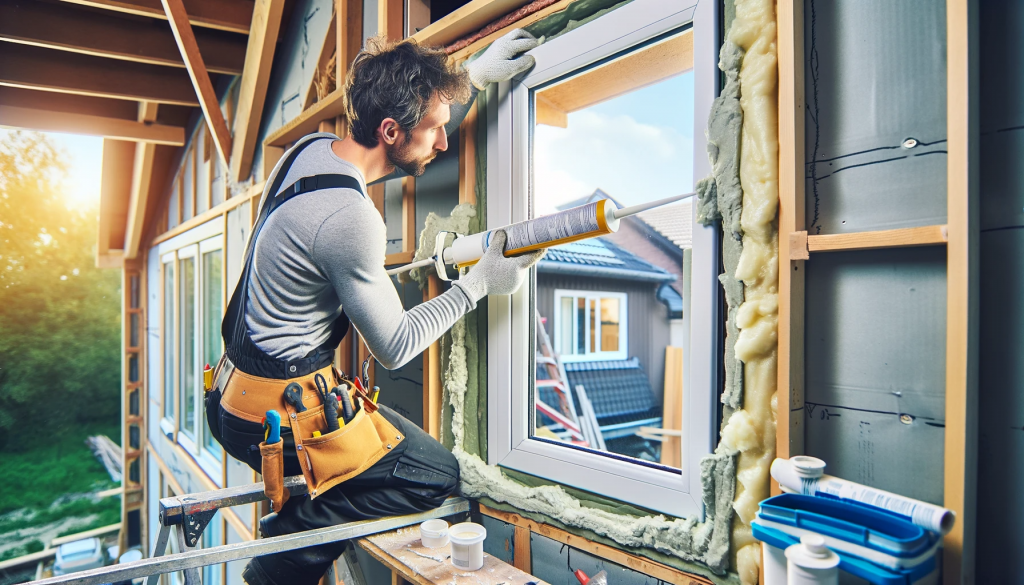
Ignoring window insulation can significantly increase your energy bills due to the increased heat loss through windows. Windows are one of the main sources of heat loss within a home, and by keeping them well insulated, you can drastically reduce energy bills and the amount of energy used.
Poorly insulated windows can lead to drafts and gaps, allowing cold air to enter and warm air to escape, making your heating system work harder to maintain a comfortable temperature. This increased workload for your heating system can result in higher energy consumption and, consequently, higher energy bills.
Energy-efficient windows and proper insulation work hand in hand to create an airtight barrier, reducing heat loss and energy consumption[8]. Energy-efficient glazing, such as double or triple glazing, can reduce heat loss through windows, leading to fewer drafts and cold spots.
According to the Department of Energy, replacing single-pane windows with double-pane windows can result in savings of up to $450 annually.
In addition to energy-efficient glazing, other measures such as window insulation film, thermal curtains, and insulated cellular shades can also help reduce heat loss through windows.
For instance, tightly installed cellular shades can reduce heat loss through windows by 40% or more, equating to about 10% heating energy savings[5]. Window insulation film can also make a significant difference in the comfort of your home and lead to reduced energy bills.
However, it’s important to note that the effectiveness of these measures can be compromised by poor installation. A poorly installed window or window insulation can reduce the energy-saving benefits. Therefore, it’s recommended to have these measures installed by professionals to ensure maximum effectiveness.
In conclusion, ignoring window insulation can lead to significant heat loss, increased energy consumption, and higher energy bills. Investing in energy-efficient windows and proper window insulation can help reduce these costs and make your home more comfortable.
FAQs
What are the signs of inadequate insulation in a home?
Inadequate home insulation often leads to noticeable issues like high energy bills, due to heating and cooling systems overworking to maintain comfortable temperatures. This inefficiency can also result in uneven temperatures across different rooms.
Signs like cold walls, floors, and ceilings, along with drafts, especially around windows and doors, further indicate poor insulation. In winter, the formation of ice dams on the roof suggests heat escaping from the attic, and increased pest infestations can hint at insulation gaps.
These symptoms collectively point to a need for better insulation to enhance comfort and energy efficiency in the home.
How much does home insulation typically cost?
The cost of home insulation varies widely depending on factors like the type of insulation, the size of the area to be insulated, and regional labour costs.
On average, homeowners can expect to pay between $1,400 to $6,000, with most spending around $2,500 for a complete insulation project.
Basic materials like fibreglass batt insulation are on the lower end of the cost spectrum, while more advanced options like spray foam insulation tend to be more expensive.
Additionally, professional installation will add to the overall cost but ensure proper and efficient insulation.
Can insulation help with noise reduction?
Yes, insulation can significantly help with noise reduction in homes. Insulating materials, especially those that are dense and fibrous like fibreglass or foam, are effective at absorbing sound waves, thereby reducing the transmission of noise from outside or between different rooms.
This is particularly beneficial for creating quieter living spaces in areas with high external noise or in multi-family dwellings. The effectiveness of insulation in soundproofing can vary based on the type and thickness of the insulation used.
How long does insulation last?
The lifespan of insulation varies depending on the type of material used, but it can generally last anywhere from 20 to 80 years or more. Fiberglass, cellulose, and foam insulation are among the most durable types, often remaining effective for several decades.
The longevity of insulation can be influenced by factors like moisture exposure, pest infestations, and proper installation. Regular inspections are recommended to ensure insulation remains in good condition and continues to perform effectively.
Is there an optimal time of year to install insulation?
The optimal time to install insulation largely depends on your climate and specific needs, but generally, it can be installed any time of the year.
However, many homeowners prefer to do it in the fall or spring, when weather conditions are milder and more conducive to home improvement projects.
Installing insulation before the extreme temperatures of summer or winter can also ensure your home is better prepared for energy efficiency during these peak seasons.
That said, if you’re experiencing significant insulation-related issues, it’s advisable to address them as soon as possible, regardless of the season.
Can I insulate my home myself?
Yes, you can insulate your home yourself, especially if you are doing simple projects like adding insulation to an attic or installing batt and roll insulation. However, it requires proper knowledge of insulation types, installation techniques, and safety measures.
For more complex tasks, such as installing blown-in or spray foam insulation, professional installation is often recommended due to the specialized equipment and expertise needed.
If you choose to DIY, it’s crucial to follow manufacturer instructions and adhere to local building codes to ensure effective and safe insulation.



